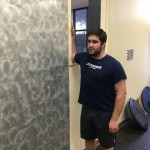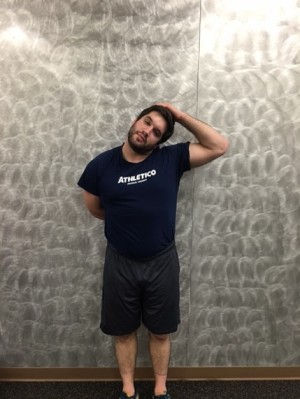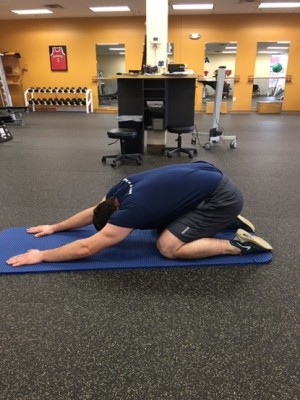
How Swimming Can Help Improve Your Health
9 CommentsSwimming continues to grow in popularity as one of the aerobic exercises of choice. With as little as 2.5 hours of swimming a week you can significantly decrease your risk of chronic illnesses. Swimming not only improves cardiovascular health, improves muscle strength and endurance, and increase flexibility/range of motion, it also is able to accomplish this with less impact stress on the body and joints. This can be particularly beneficial for those with arthritis and other health related illnesses that do not respond as well to higher impact activities. As more and more people are engaging in this health promoting activity, we wanted to provide swimming tips before you jump feet first in your local pool.
This can be particularly beneficial for those with arthritis and other health related illnesses that do not respond as well to higher impact activities. As more and more people are engaging in this health promoting activity, we wanted to provide swimming tips before you jump feet first in your local pool.
Stretching can be an important part of any exercise regime and swimming is no different. Swimming however can stress the shoulder a lot more than other aerobic exercises. Due to the high frequency of repetitive motion with the shoulder, swimmers can be susceptible to shoulder pain. In fact, 27-87% of competitive swimmers can report shoulder pain1.
The nature of swimming along with the stability of the shoulder can lead to this shoulder pain sometime during their swimming career. In order to understand why this occurs, let’s take a closer look at the shoulders anatomy. The stability of the shoulder is comprised of both static stabilizers (ligaments and capsule) and dynamic stabilizers (muscles). The shoulder relies heavily on the dynamic stabilizers to provide stability to the shoulder. When we are preparing for swimming with a stretching program we want to avoid over stretching our static stabilizers. Stretching of the static stabilizers can cause shoulder instability which will lead to shoulder pain. The ideal stretching program will target the dynamic stabilizers of the shoulder. A stretching program that addresses the dynamic stabilizers allows for normal ROM, offsets muscle imbalance, and prevents faulty mechanics. Below are the recommended stretches for swimmers2:
lead to this shoulder pain sometime during their swimming career. In order to understand why this occurs, let’s take a closer look at the shoulders anatomy. The stability of the shoulder is comprised of both static stabilizers (ligaments and capsule) and dynamic stabilizers (muscles). The shoulder relies heavily on the dynamic stabilizers to provide stability to the shoulder. When we are preparing for swimming with a stretching program we want to avoid over stretching our static stabilizers. Stretching of the static stabilizers can cause shoulder instability which will lead to shoulder pain. The ideal stretching program will target the dynamic stabilizers of the shoulder. A stretching program that addresses the dynamic stabilizers allows for normal ROM, offsets muscle imbalance, and prevents faulty mechanics. Below are the recommended stretches for swimmers2:
- Pectoralis Major/Minor
- Upper Trapezius
- Latissimus Dorsi.
These stretches can be performed several hours before or after a workout as well as on off swimming days.
 Let’s also take a quick moment to make a distinction between stretching and warming up. As we have already mentioned stretching is an important part of our health to maintain range of motion and flexibility, but stretching before an activity is not the same as warming up. Warming up may include stretching but is not exclusive to stretching. Warming up prepares the joints and muscles for the activity that is about to occur. This could include walking, easy jogging, and light calisthenics. US Swimming has recommended several active movements specific to swimming that will prepare your body the unique movements that swimming requires. The recommended active warm-up by US Swimming2 can be found here.
Let’s also take a quick moment to make a distinction between stretching and warming up. As we have already mentioned stretching is an important part of our health to maintain range of motion and flexibility, but stretching before an activity is not the same as warming up. Warming up may include stretching but is not exclusive to stretching. Warming up prepares the joints and muscles for the activity that is about to occur. This could include walking, easy jogging, and light calisthenics. US Swimming has recommended several active movements specific to swimming that will prepare your body the unique movements that swimming requires. The recommended active warm-up by US Swimming2 can be found here.
Swimming can be an excellent option as your primary health promoting exercises program or as a cross training exercise program if you participate in higher impact activities such as running. Keeping these stretching and active warm up movements as part of your exercise routine will allow you to have more time in the water and less time on the land!
Athletico provides complimentary injury screens at a location near you. Please click the button below to schedule yours now!
Click to Schedule a Complimentary Injury Screen
- Tovin, B.J. (2006). Prevention and Treatment of Swimmer’s Shoulder. North American Journal of Sports Physical Therapy, 1 (4). 166-175
- Edelman, G.T. April 8, 2009. An Active Shoulder Warm-up for the Competitive Swimmer. Retrieved from https://www.esopt.com/site/1/docs/Active_Warm_Up_040809.pdf

9 Comments
Barbara Eylers
Id enjoy your E mails so informative. thanks so much
Brian Whittington
Barbara-
Thank you for the kind words!
Amy Gilmore
Great information and very well written. Now I just need the apartment complex I live in to make the pool they supply an indoor pool so I can swim all year round!
LuAnn
Very interesting article and good advice I would like to put into practice.
SleeperMan
Thank you for the article. But for some reason, warming up doesn’t really prevents sudden cramps whenever I’m swimming.
Brian Whittington
Thanks for the questions SleeperMan! There are two general rules of thought regarding muscle cramping during exercise. The traditional view of muscle cramping is that it is caused by dehydration and loss of electrolytes such as sodium and potassium. So the classic advise is to make sure you are hydrated and load up on potassium rich foods (bananas). However, there is not an abundant amount of research linking dehydration and electrolyte imbalances as the root cause of cramping (on the flip side this maybe due to the lack of research and the difficulty in performing or recreating these conditions in a lab setting). Another theory of muscle cramping is from neuromuscular fatigue (muscle becoming fatigued or exhausted). Each person will have their own point of muscle fatigue, but this maybe a reason that some people cramp and other don’t. The theory states that when muscles become fatigued, the mechanisms that usually prevent over-contraction of the muscle misfire and cramping occurs.
Like most things, its probably a little combination of both and so the general advice is to be adequately hydrated, eat food rich in potassium and sodium, pickle juice (more research is needed here), training adjustments (periodization), and the warm-up and stretching advise in the blog. Hope this helps.
Brian Whittington
Thank you!
Brian Whittington
An indoor pool would be great!
Brian Whittington
Henry-
Thank you for the kind remarks! So glad you found it helpful!